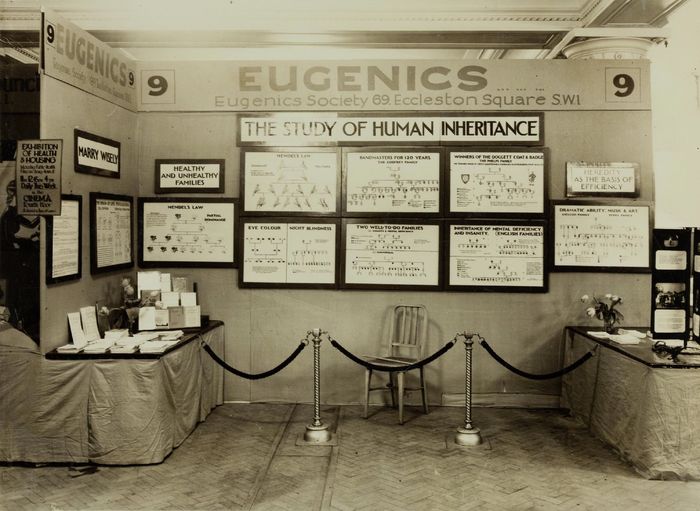The silent symphony of mould, paper, and time
Laura Nassar explores books, the battle against mould, and the tick-tock of the entropy clock

In the quiet corners of the world’s oldest libraries, a silent symphony plays, involving a complex mix of biology, chemistry, and the relentless march of time. At Cambridge, this universal process is observed throughout its historic collections alongside a silent struggle to maintain the integrity of centuries-old wisdom. Scholars and students roam the aisles while thousands of books gradually decay, driven by mould, the chemistry of ageing paper, and the inexorable increase in entropy. So how do we actually outsmart the sneaky mould and menacing tick-tock of the entropy clock?
“Our aim is to turn the mould’s cosy paper bed into a bed of nails”
First, let’s dive into the adversary itself: mould
These are not just ugly blotches on a page, they’re the result of an unfortunate biological invasion. Mould spores are omnipresent in the air all around us, and they are obsessed with the cellulose-rich environment of paper. These mould spores germinate, sending out hyphae that burrow into the paper. Hyphae are thread-like structures, comparable to plant roots, which can physically break down the paper’s fibres. Hyphae also allow the mould to access a greater surface of paper, maximising the amount it can feed on. As the mould feasts, it releases enzymes that break down cellulose into simpler sugars, essentially digesting the paper from the inside. The hyphae’s physical infiltration, as well as the enzymatic action coupled with the by-product of acids, weakens the paper, leading to discoloration, brittleness, and eventually disintegration. Unfortunately, some mould strains are invisible to the naked eye, meaning the best course of action is preventative. Our aim is to turn the mould’s cosy paper bed into a bed of nails. By regulating humidity to stay below 65%, we create a less hospitable environment for these microorganisms. In addition, temperature is kept ideally at about 18 °C to slow down the mould’s metabolic processes driving the decay. Of course, depending on the library and the value of the ancient books, it can be taken a step further by controlling the air quality, engaging in professional book cleanings, employing UV light (which deters mould growth), using mould inhibitors etc… Unfortunately, this is not nearly enough, as the chemistry of ageing paper itself is a formidable force.
Combatting the chemistry of ageing paper
“In the quiet sanctuaries of knowledge, there is a battle not just against mould and acid, but against the very essence of thermodynamics”
Paper made from wood pulp naturally contains lignin, which breaks down over time through oxidative degradation, releasing acids that further wreak havoc on the unfortunate papers. This is acid hydrolysis, the paper’s mid-life crisis, and is one of the primary culprits of embrittlement. Although this can be held at bay by keeping books in certain environmental conditions, the ultimate degradation of lignin is inevitable. In order to combat this, a deacidification process can be employed. The books are either doused in or misted with an alkaline solution designed to neutralise these acids. This is kind of like adding a pinch of baking soda to neutralise a too-acidic tomato sauce. Although this unfortunately does not turn back time, it does help the paper age more gracefully, while maintaining its condition for a lot longer.
The inevitable onslaught of entropy
Entropy is the degree of disorder or uncertainty in a system, and it is a universal law of thermodynamics that all systems tend to move towards disorder. An analogy for entropy that is given quite often (but is frankly a bit flawed) is comparing a clean room to a dirty one. A messy room has high “entropy”; with no effort, a room will naturally become messy and disordered over time, whereas it is very unlikely that a room will become spontaneously neat. This law of entropy applies to all systems, even books. With the passing of time, the molecular integrity of books is under siege by the inevitable force of entropy, urging them towards a state of chaos. In other words, regardless of any external factors, ink will naturally spread, bindings will loosen, and the pages’ texture will be replaced with something crunchy that screams “antique”. So, in the quiet sanctuaries of knowledge, there is a battle not just against mould and acid, but against the very essence of thermodynamics. We may not be able to stop the tick-tock of the entropy clock, but through careful handling, active maintenance, and sometimes restoration, the lifetime of each page can be prolonged.
Preservation at the University of Cambridge
The University of Cambridge has a dedicated Conservation and Preservation Unit which employs a multifaceted approach to safeguard and restore invaluable resources. This includes Darwin’s original manuscripts, rare books, and thousands of other important historical collections including photographs, papyrus, parchment, books and manuscripts. This commitment to preservation is shared among major libraries around the world, each adopting similar methods to preserve their historical and cultural legacies.
 Comment / Plastic pubs: the problem with Cambridge alehouses 5 January 2026
Comment / Plastic pubs: the problem with Cambridge alehouses 5 January 2026 News / Cambridge businesses concerned infrastructure delays will hurt growth5 January 2026
News / Cambridge businesses concerned infrastructure delays will hurt growth5 January 2026 News / New movement ‘Cambridge is Chopped’ launched to fight against hate crime7 January 2026
News / New movement ‘Cambridge is Chopped’ launched to fight against hate crime7 January 2026 News / Uni-linked firms rank among Cambridgeshire’s largest7 January 2026
News / Uni-linked firms rank among Cambridgeshire’s largest7 January 2026 News / AstraZeneca sues for £32 million over faulty construction at Cambridge Campus31 December 2025
News / AstraZeneca sues for £32 million over faulty construction at Cambridge Campus31 December 2025









